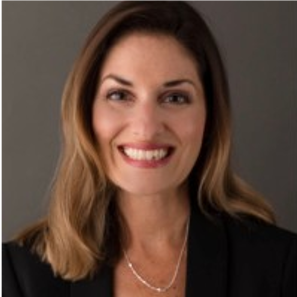Webinar Recap: Rethinking Education in the Crisis
April 28 (Replay at end of page)
On April 28, The Advisory Board for the Arts hosted a webinar on Rethinking Education in the Crisis. We were joined by two guests, Bridget Cavaiola, Interim Director of Education and Outreach at La Jolla Playhouse and Cevin Owens, Senior Learning Solutions manager at Harvard Business School’s corporate learning. Bridget shared the impressive ways La Jolla Playhouse has pivoted their education program online in recent weeks, while Cevin provided valuable guidance on creating successful online learning programs. Marisa Plowman, also from Harvard Business School, also helped answer technical questions about remote learning through the chat.
With countries across the globe under stay at home orders, there has been a massive shift in how we all manage our daily lives. McKinsey recently launched a poll to understand how consumer behaviors in the US have changed since the COVID-19 crisis, and it showed that remote learning is one place with a large increase and a set of new habits being built—habits that could potentially last long after the crisis is over. As a result, arts organizations have an opportunity right now to build remote learning capabilities that will not only provide value throughout the crisis, but potentially more importantly, beyond.
Remote Learning Defined
Typically,remote learning interventions are talked about on two dimensions. First, whether the training is real-time or not – referred to as either asynchronous or synchronous and second, to how broad of an audience the intervention is disseminated. In other words, is it 1:many, all the way to 1:1.
One-to-many learning– whether asynchronous or synchronous -- is relatively fast to create and distribute. Given this is typically a more passive learning intervention, without any interactivity from the users, this type of intervention is best used for informing or entertaining. This is the most common type of education we’ve seen arts organizations pivot to in the weeks since the pandemic struck.
Synchronous interactive or personalized learningtends to take the form of lessons – private or group lessons, with different levels of personal feedback. Synchronous, personalized learning is the closest thing we have in a no-human-contact environment to a lesson.
Asynchronous, interactive learning (think coursework and curricula)— is the sweet spot for learning at scale. It’s the best way to influence large numbers of learners. You can build it once and leverage it across many people, over time. If the habit of remote learning is here to stay, this will likely be where more organizations need to build assets.
As online coursework becomes more prevalent it is also a potential mechanism for earned income. We are seeing pay-what-you-can zoom classes, particularly in ballet and theater, but the scale of online education is partly what allows them to be profitable in a way that synchronous learning cannot be. Not every organization is looking to use education to provide earned income—it is important to stay aligned with your mission—but for those who have lost ticket revenue it can provide a new revenue opportunity.
Innovations at La Jolla Playhouse
After laying the groundwork for our discussion on remote learning, we turned to Bridget Cavaiola, Interim Director of Education and Outreach at La Jolla Playhouse who shared investments LJP has made in remote learning since the crisis. As educating the next generation of young artists is a critical part of La Jolla Playhouse’s mission, the decision to invest in online learning resources when the pandemic hit was a no-brainer. While they saw other arts organizations in their region putting up past content online, La Jolla wanted to push their thinking to create a robust online platform of curriculum, entertainment and enrichment. They created a new area on their website, Playhouse Online, to provide a central hub for their extensive online resources. Bridget talked about four key programs they have launched online:
La Jolla Playhouse Vault: staff members and artists look at old performance and talk about significance of those performances in their life through both written and video content.
Artist Alley: conversations with previous LJP artists.
Without Walls Programming: La Jolla Playhouse’s Without Walls program typically takes theatre into unconventional spaces. LJP is now going to do this virtually. For example, their artist in residence has created a new piece where you are able to listen and walk around your neighborhood and imagine what might be happening or the conversations that might be taking places in the homes surrounding you. They plan for all these pieces to be interactive.
Create and Learn: this section provides support and curriculum for educators and students. They are taking materials typically used in classroom and giving teachers the resources to use them virtually. These projects are designed to give both students and teachers “brain breaks”.
Given their extensive relationships with schools prior to the crisis, the organization has been able to reach a large volume of teachers in their area. However, Bridget also said that their investments in these online resources has also allowed them to extend their reach far beyond their community and now they are seeing engagement from people across the globe.
As they look toward the summer, LJP is now working on how to take all their summer camps online. They are operating under the mindset “boundaries are freeing” and are excited about the potential for young participants in their programs to have the opportunity to participate in online sessions with peers outside of San Diego. The expectation is that these students will work together to create an entirely new piece of theatre virtually. Additionally, the organization is about to launch some paid classes but at a very discounted rate compared to what they would charge in person.
Bridget shared that they are looking at this time as an opportunity to create online content that can be used over and over and to reach people they have not been able to in the past. They believe this period of closures is affording them the time develop something that will be worthwhile far beyond the crisis. As organizations continue in their scenario planning, we offer the following additional tips
Recommendations for Building Online Learning Capabilities
To help arts organizations develop their own remote learning resources, we invited Cevin Owens, Senior Learning Solutions Manager at Harvard Business School to share her perspective. Cevin offered the following recommendations:
Tailor the experience to users’ needs and preferences.Like in-person learning, everyone has different preferences and needs when learning online. One size does not fit all. When designing an online learning resource, organizations should start by building a user persona. The persona should define their desired user’s goals, needs, learning preferences, time constraints, etc. Build the learning objective with your mission in mind, but also with the learning persona in mind.
Design the program using the “Learn, Practice, Reflect” model. During the learning phase, provide engaging content with blended components (e.g., interactive polling or small group problem solving) to help keep users’ attention. Then give users the opportunity to apply their learning through practice. And finally, allow for reflection on the experience (e.g., rating it).
Consider credentialing your courses. There has been a huge growth in credentialing remote courses over the past 5 years as it provides motivation for the user and clarity around the objectives of the course. Additionally, it enhances users’ marketability on their resume, providing more tangible value. Participants in the chat agreed about the strong potential of credentialing but noted the importance of having a qualified partner.
Determine the best platform for your objective.When determining which platform to use, consider synchronous vs. asynchronous and what is going to be the best experience for your learner. When asked specifically about the best platforms to engage children, Cevin says she has seen the long-standing Blackboard platform used most often for traditional coursework and Google Classroom and Zoom for more interactive learning. Some participants expressed concern about the security of Zoom in the chat. This guide reviews the privacy and security of some of the most popular video call apps. Specifically, Google Duo and Jitsi are noted for higher security levels.
Create a hook.When designing a program, consider a hook to keep people coming back. Hooks are often embedded in opportunities to apply learning in the real world. The goal is relevance and direct application to the learner.
Cevin also noted a unique opportunity for arts organizations right now to partner with corporations. With the shift to remote work and corporate learning, corporations are looking for “attention restoration” which typically comes in the form of entertainment.
Recognizing the potential of education to help organizations stay connected to audiences throughout the crisis and beyond, many arts organizations across the globe have already made investments to create new online learning resources. To help organizations see the range of innovations, we’ve been tracking them and they can be downloaded here. We will continue to update this and our broader crisis-related resources on our Arts Resilience Center.
Resources to Support Development of Remote Learning
(Suggested by Cevin Owens)
For eLearning professionals and multiple schools of thought on approaches:
Learning more about instructional design:
https://www.instructionaldesign.org/concepts/ (comprehensive site)
http://www.nwlink.com/~donclark/hrd.html (quick overviews)
Great guide for teaching in zoom:
For K-12 learning and beyond:
Augmented reality for student learning: https://www.edutopia.org/blog/ar-apps-for-student-learning-monica-burns
Tips on marketing digital learning:




